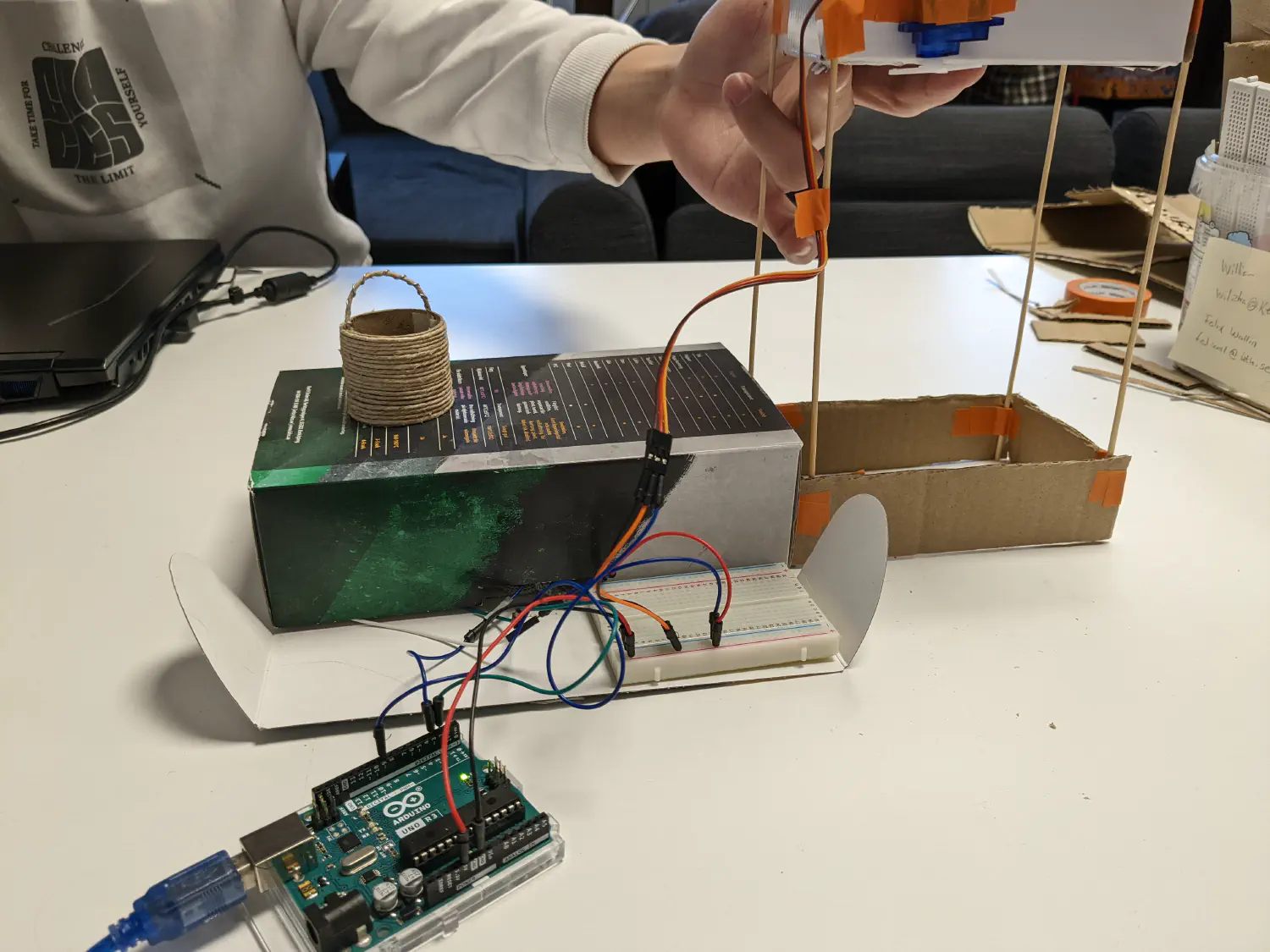Acorn, Nocorn
Design examining economy–ecology
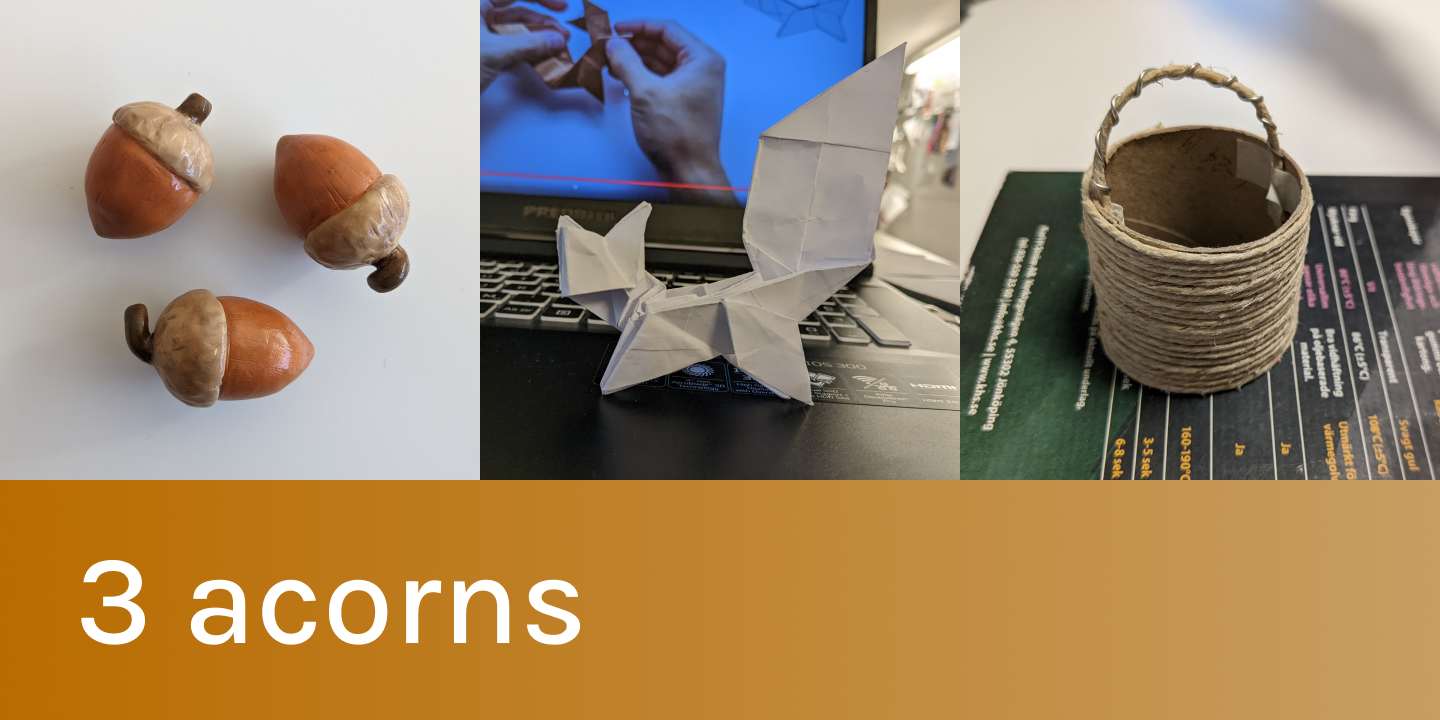
Role Physical interaction design, critical design, sensor programming
Tools Arduino, C++, Processing
Team William Zhan
Links Github
Feb – Mar 2024
If you want the full experience, I recommend watching the video before reading further:
The design consists of a birdhouse-like house where it is implied a squirrel lives, with an acorn visible at the entrance; a basket in which the acorns can be put; and a screen displaying the number of collected acorns. When all three acorns are collected, the floor opens and out falls the squirrel, committing suicide.
Conceptual meaning
Critical design is a method for challenging assumptions and norms, raising awareness, and sparking reflection.
Our design aims to make salient our very one-way relationship to the rest of nature as one of primarily taking. Stealing acorns from the squirrel is framed as good – that’s why we display the “You win!” message in the end, contrasting with the fact that this also means that somebody has to lose.

There is little evidence of absolute decoupling between global economic growth and resource extraction, yet the narrative of green growth dominates. These things are complex, so we take a simple case: acorns (ecology) are directly transformed into points (economy). The squirrel dies as a direct consequence of the user’s actions.
Yet we also use reductionist metrics and information-hiding to nudge the user towards our intended behaviour and to make the design more impactful: The counter incentivises stealing acorns (you get more of what you quantify), and the consequences are made clear only after the fact.
Process
We started with a long brainstorming session where we got a lot of ideas in the areas of critical, speculative, and more-than-human design. We decided on one, then started sketching different ways of realising the concept:

I made the acorns out of Fimo clay and acrylics:
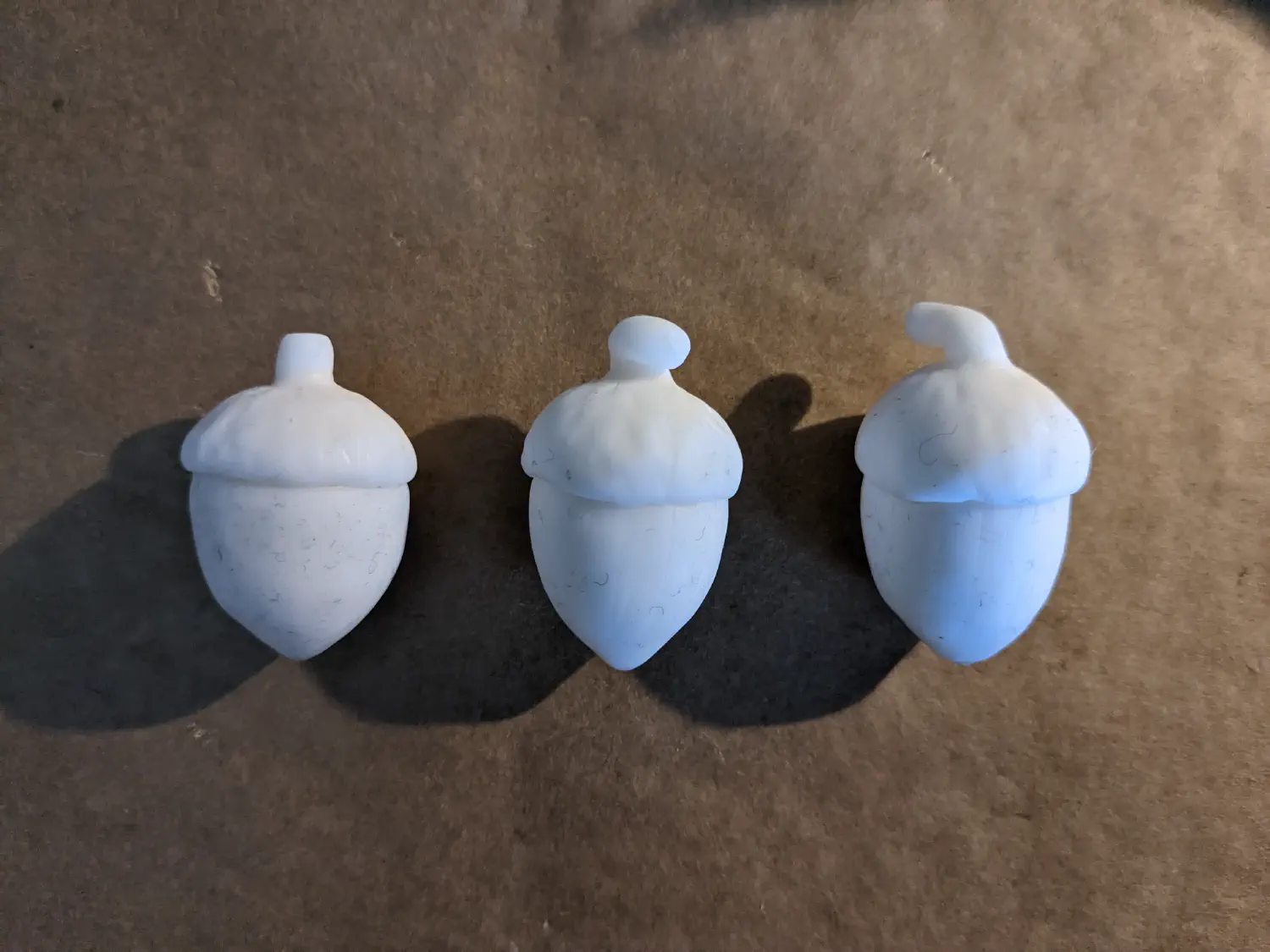
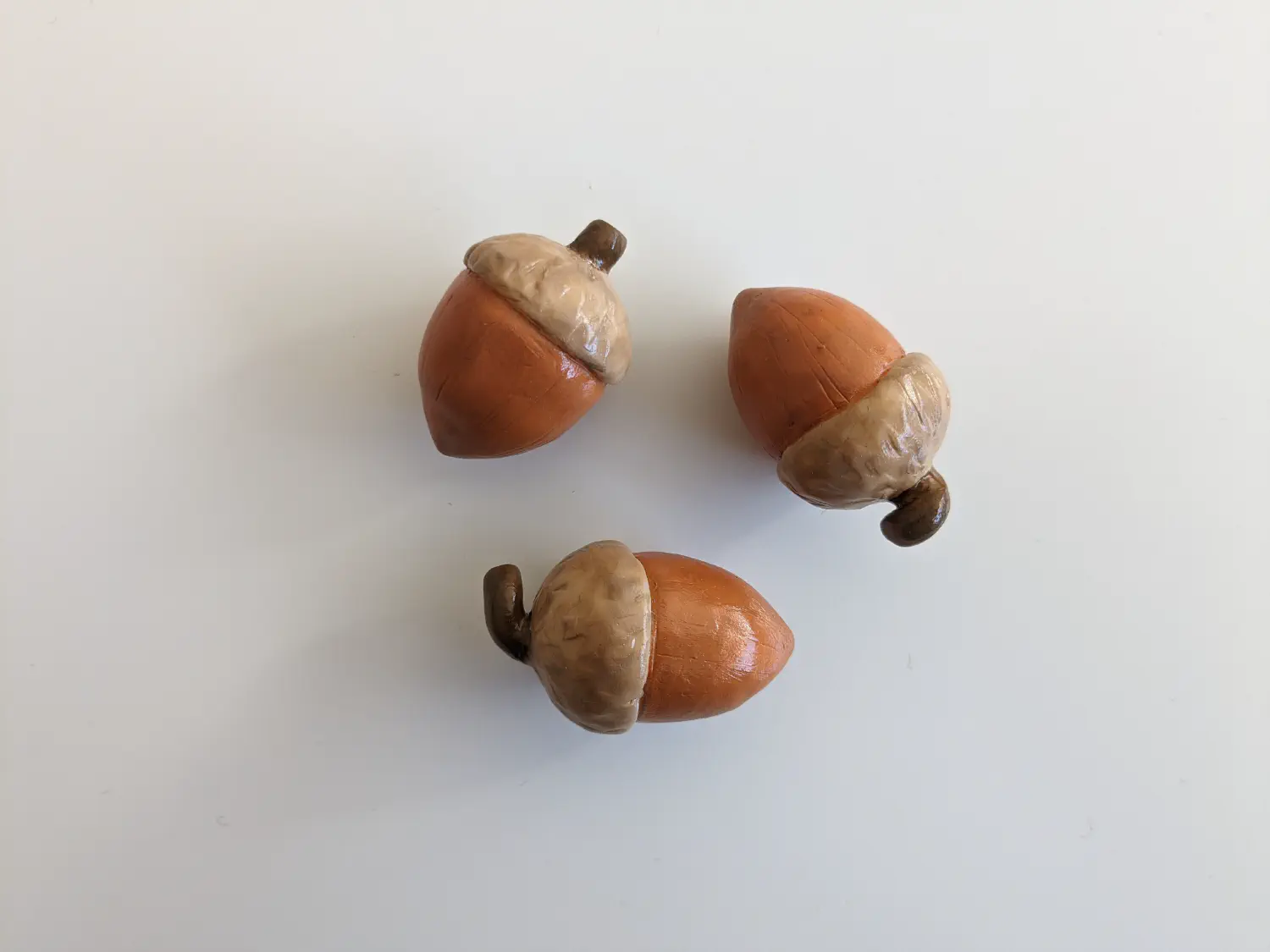
 |  |
Tangibles used in Acorn, Nocorn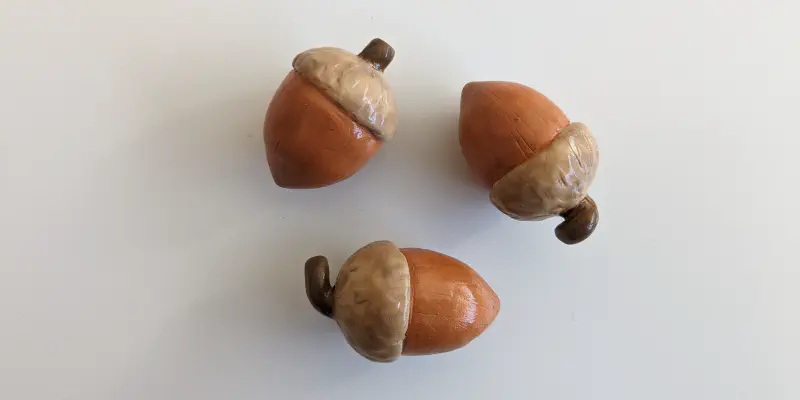
Acorns
And William made the squirrel through origami:
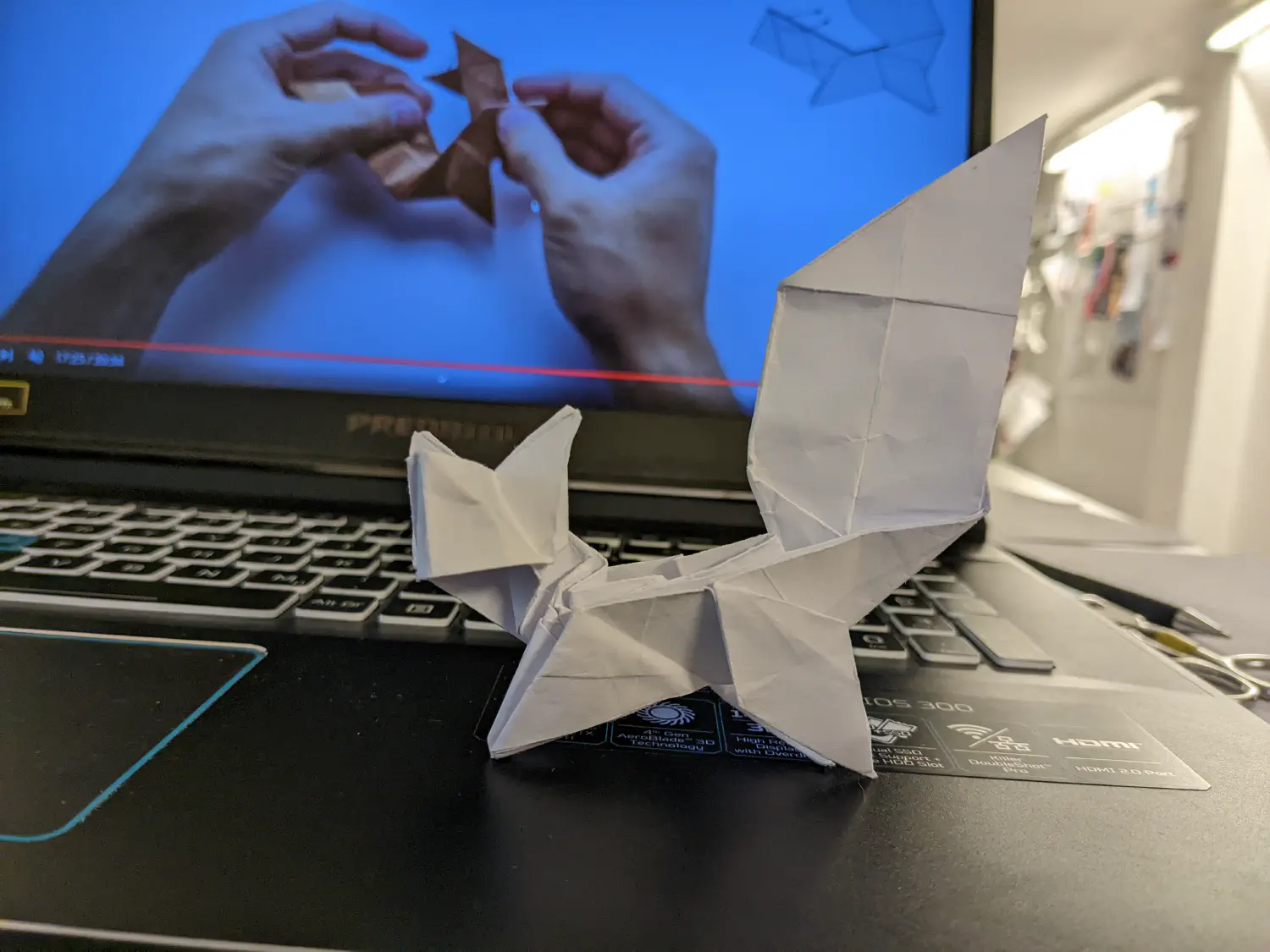
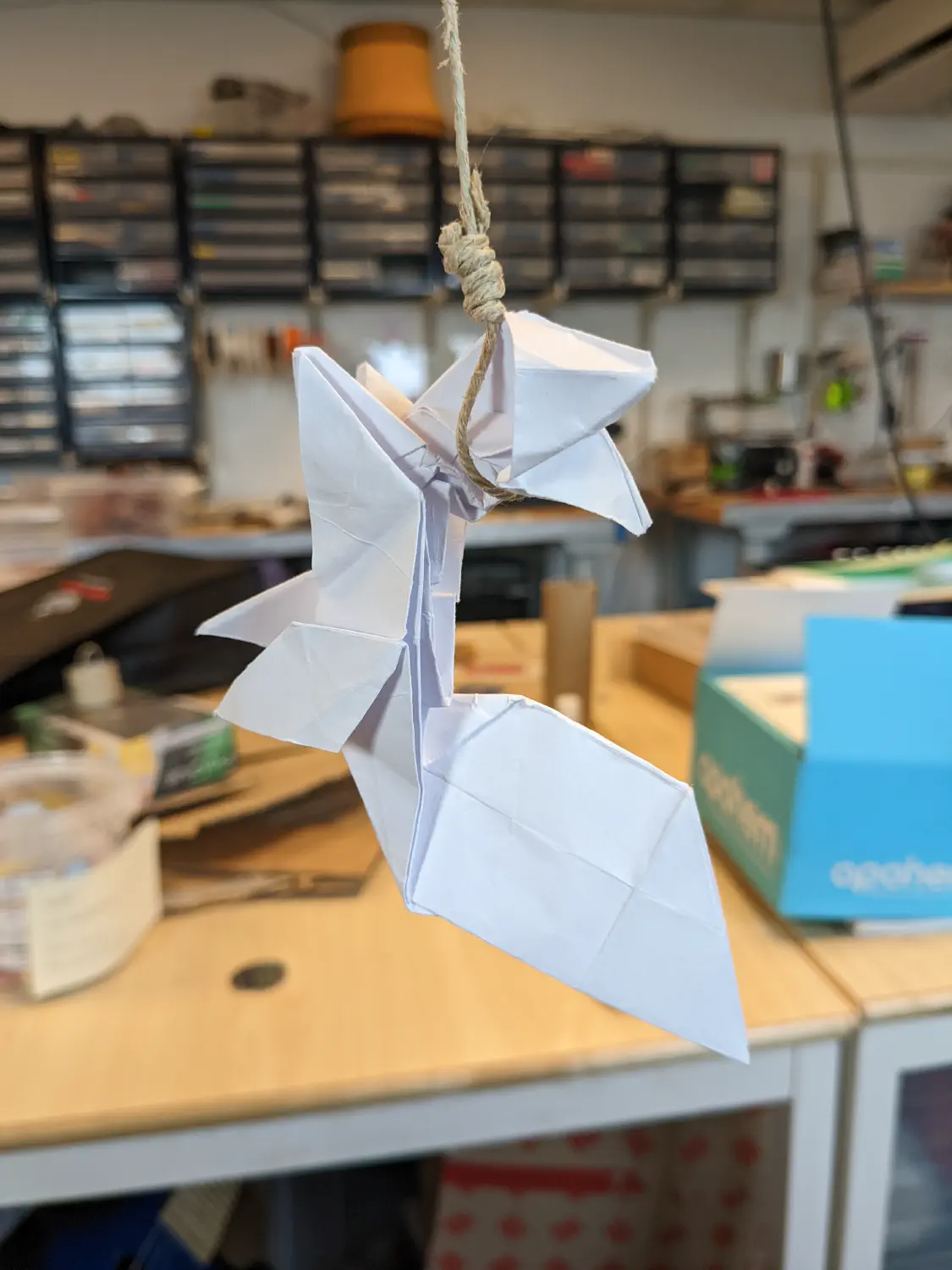
 |  |
Then we got the UV sensor and servo motor to work with Arduino and Processing, and started on the props. We made the basket out of toilet paper roll with some thread glued on to give it the classic look, and attached the UV sensor in the box underneath to register falling acorns:
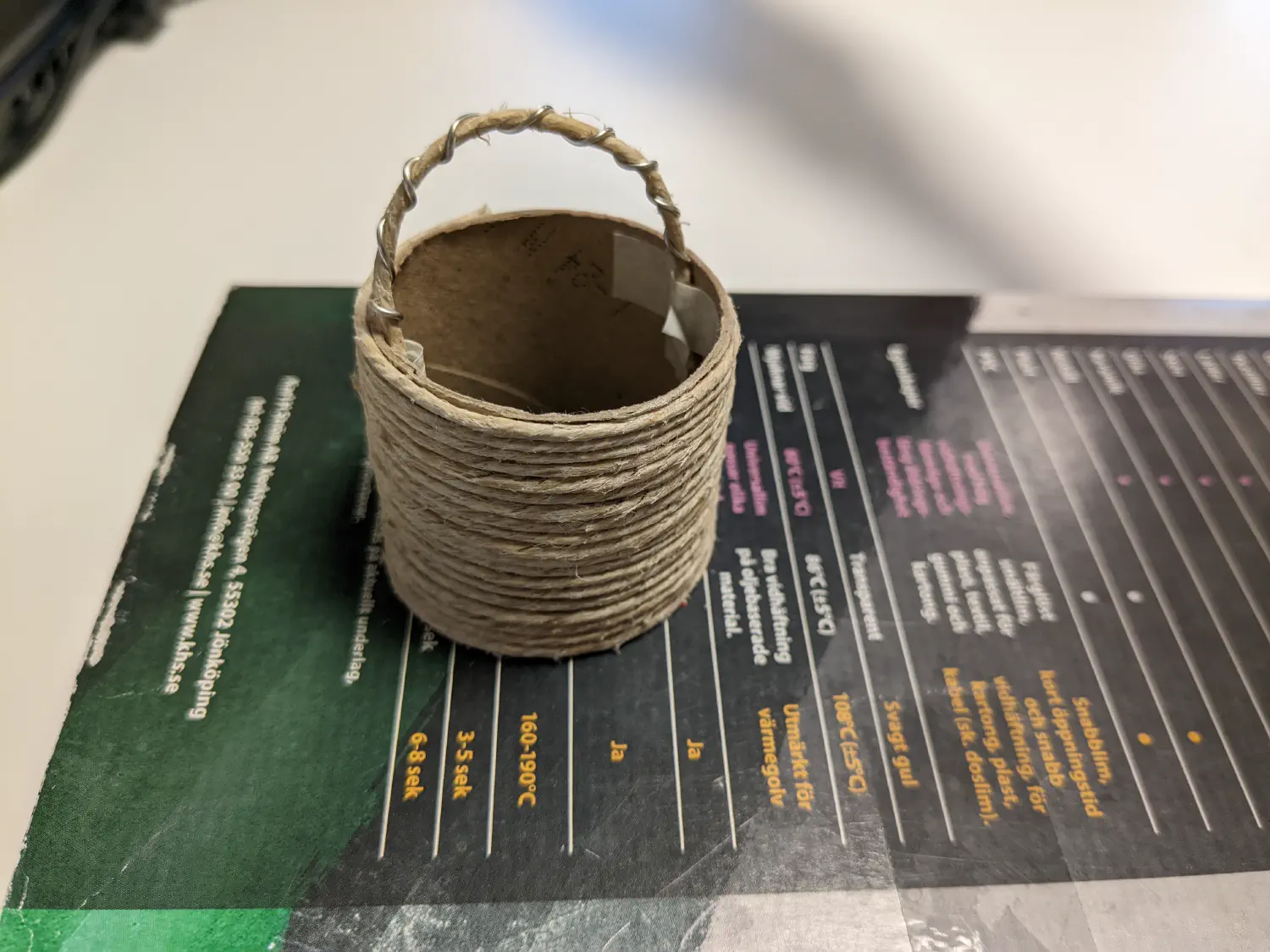
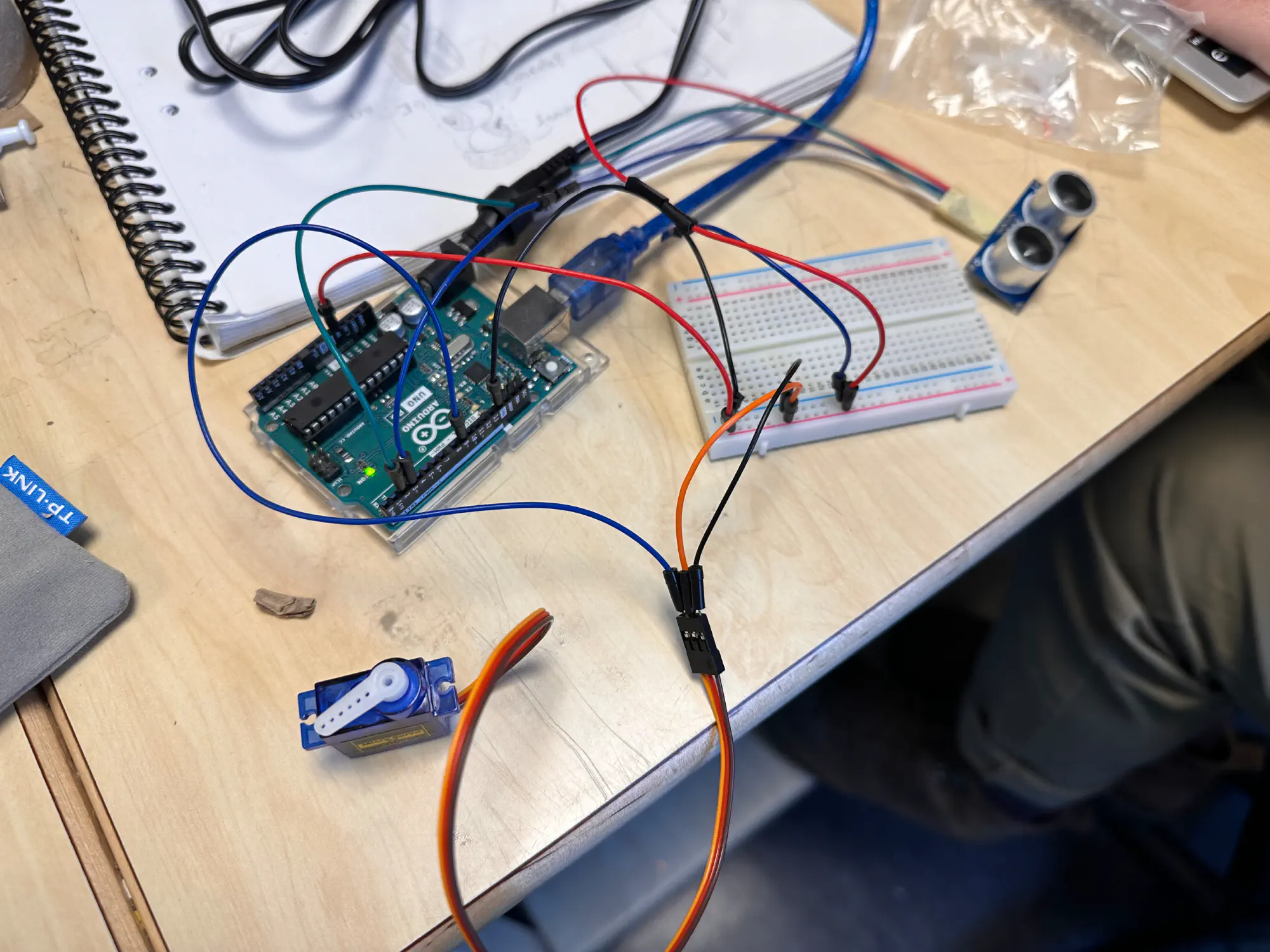
 |  |
Right: Arduino with connected servo motor and UV sensor
We made the house out of a cardboard box, with a hole for acorns (a tilted floor and a funnel made out of two sticks made sure they rolled out consistently), and a trapdoor closed by the servo:
The final layout, from the back. The UV sensor is under the basket, hidden within the box. The servo motor keeps the house floor closed and the squirrel hidden.